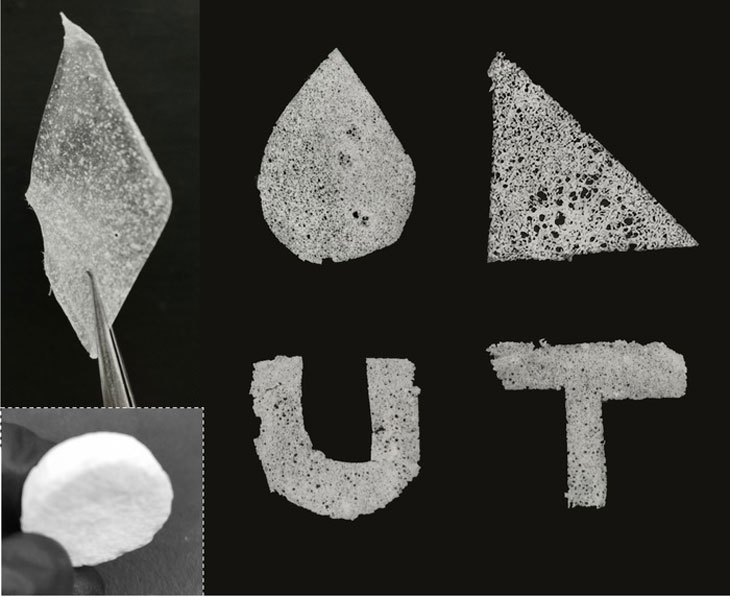While access to drinking water is a growing concern in many parts of the world, researchers at the University of Texas have developed an inexpensive gel film capable of extracting liters of water from Ambiant air.
Common and cheap ingredients
Featured in the magazine NatureCommunicationsthe gel consists mainly of cellulose (main constituent of the cell wall of many plants) and konjac gum (food additive), which are cheap and common. The combination of these two ingredients makes it possible to form a film capable of absorbing the water present in the air and releasing it on demand using a minimum amount of energy.
The porous structure of the rubber attracts the humidity present in the surrounding air and condenses it, while the cellulose, designed to become hydrophobic from a certain temperature, allows the captured water to be released.
Making it possible to obtain films of all shapes and sizes, the manufacturing process is also simple: the basic ingredients are mixed to form the gel and then poured into a mold, where they harden in two minutes. The film obtained is then freeze-dried, then unmolded and ready to be used.

Unequaled performance
When the relative humidity was 30%, this innovative material was able to produce up to 13 liters of water per day per kilogram of gel, compared to more than 6 liters per day and per kilogram in very dry air (less than 15% humidity), which is a substantial improvement over previously developed devices, whose maximum output was less than 6 liters at 30% humidity.
According to the team, the performance of the material could be further improved by creating thicker films, with several absorbent layers or with a particular mesh.
Being able to be easily produced on an industrial scale and at very low cost (less than 2 euros per kilogram), this technology could be deployed in remote areas and developing countries, where it is most needed.
[related_posts_by_tax taxonomies=”post_tag”]
The post This inexpensive film extracts liters of drinking water from the air per day appeared first on Gamingsym.

